
Patricia Highsmith was an American novelist and short story writer widely known for her psychological thrillers, including her series of five novels featuring the character Tom Ripley.

The American Friend is a 1977 neo-noir film by Wim Wenders, adapted from the 1974 novel Ripley's Game by Patricia Highsmith. The film features Dennis Hopper as career criminal Tom Ripley and Bruno Ganz as Jonathan Zimmermann, a terminally ill picture framer whom Ripley coerces into becoming an assassin. The film uses an unusual "natural" language concept: Zimmermann speaks German with his family and his doctor, but English with Ripley and while visiting Paris.

Thomas Ripley is a fictional character in a series of crime novels by American novelist Patricia Highsmith, as well as several film adaptations. The character is an anti-hero: he is a career criminal, a con artist and serial killer. The five novels in which he appears—The Talented Mr. Ripley, Ripley Under Ground, Ripley's Game, The Boy Who Followed Ripley, and Ripley Under Water, were published between 1955 and 1991.

This Sweet Sickness (1960) is a psychological thriller novel by Patricia Highsmith, about a man who is obsessed with a woman who has rejected his advances. It is a "painful novel about obsessive imaginary love".
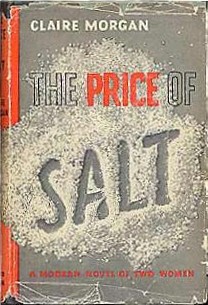
The Price of Salt is a 1952 romance novel by Patricia Highsmith, first published under the pseudonym "Claire Morgan". Highsmith—known as a suspense writer based on her psychological thriller Strangers on a Train—used an alias because she did not want to be tagged as "a lesbian-book writer", and because of the use of her own life references for characters and occurrences in the story. Though Highsmith had many sexual and romantic relationships with women and wrote over 22 novels and numerous short stories, The Price of Salt is her only novel about an unequivocal lesbian relationship, and its relatively happy ending was unprecedented in lesbian literature. It is also notable for being the only one of her novels with "a conventional 'happy ending'" and characters who had "more explicit sexual existences".
Otto Penzler is a German-born American editor of mystery fiction, and proprietor of The Mysterious Bookshop in New York City.

Deep Water is a psychological thriller novel by Patricia Highsmith, first published in 1957 by Harper & Brothers. It is Highsmith's fifth published novel, the working title originally being The Dog in the Manger. It was brought back into print in the US in 2003 by W. W. Norton & Company.
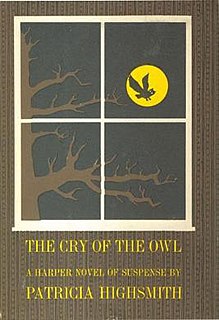
The Cry of the Owl is a psychological thriller novel by Patricia Highsmith, the eighth of her 22 novels. It was first published in the US in 1962 by Harper & Row and in the UK by Heinemann the following year. It explores, in the phrase of critic Brigid Brophy, "the psychology of the self-selected victim".

Theodora Roosevelt Keogh O'Toole Rauchfuss was an American novelist writing under her first married name, Theodora Keogh, in the 1950s and 1960s.

The Glass Cell (1964) is a psychological thriller novel by Patricia Highsmith. It was the tenth of her 22 novels. It addresses the psychological and physical impact of wrongful imprisonment. It appeared in both the UK and the US in 1964. When first published, the book jacket carried a warning that its opening scene is "almost unacceptable".
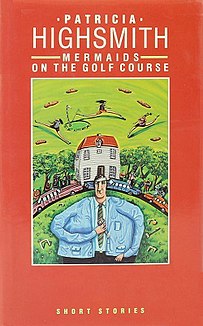
Mermaids on the Golf Course (1985) is a collection of short stories by Patricia Highsmith, encompassing her standard themes of murder, violence, secrets and insanity.

A Game for the Living (1958) is a psychological thriller novel by Patricia Highsmith. It is the sixth of her 22 novels and the only one set in Mexico.
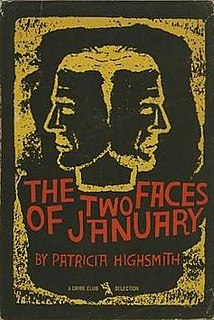
The Two Faces of January (1964) is a psychological thriller novel by Patricia Highsmith. Its title alludes to the two faces of the Roman god Janus, after whom the month of January was named. Biographer Andrew Wilson, in his 2003 publication Beautiful Shadow: A Life of Patricia Highsmith claims the title is 'appropriate for the janus-faced, flux-like nature of her protagonists'.

A Suspension of Mercy (1965) is a psychological thriller novel by Patricia Highsmith. It was published in the US under the title The Story-Teller later the same year by Doubleday. It was the eleventh of her 22 novels.

Edith's Diary (1977) is a psychological thriller novel by Patricia Highsmith, the seventeenth of her 22 novels. It was first published in the UK by Heinemann. One critic described it as "a relentless dissection of an unexceptional life that burns itself out from a lack of love and happiness".

Small g: a Summer Idyll (1995) is the final novel by American writer Patricia Highsmith. It was published in the United Kingdom by Bloomsbury a month after her death, after first being rejected by Knopf, her usual publisher, months earlier. It was published in the United States by W.W. Norton in 2004.
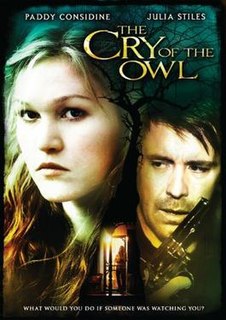
The Cry of the Owl is a 2009 thriller film based on Patricia Highsmith's 1962 book of the same name. The American-British-Canadian-French-German co-product and was directed by Jamie Thraves. and stars Paddy Considine, Julia Stiles, and Karl Pruner. This is the third filming of the book after the 1987 French film adaptation by Claude Chabrol and a German TV adaptation titled Der Schrei der Eule, also dating from 1987. After Robert Forrester is caught by Jenny Thierolf, the girl he has been spying on, he becomes the victim of her manipulative advances. The disappearance of Jenny's fiancé Greg after a fight with Robert marks the beginning of a series of dangerous and ultimately fatal incidents.
Patricia Schartle Myrer (1923–2010) was an editor, literary agent and publishing executive based in New York City. She was editor-in-chief of Appleton-Century-Crofts publishing. She eventually became president of McIntosh & Otis literary agency. She married novelist Anton Myrer in 1970. Some of the authors she represented were Mary Higgins Clark, Patricia Highsmith and Eleanor Hibbert. She retired in 1984 and died in 2010.

Found in the Street (1986) is the twentieth novel by the American expatriate writer Patricia Highsmith, the nineteenth published under her own name. It was published in the UK in April 1986 and in the US in 1987.

Sarah Hilary is a UK crime novelist and former bookseller. Her debut, Someone Else's Skin, won the 2015 Theakston's Old Peculier Crime Novel of the Year Award. Hilary was born in Cheshire before moving to the South East to study for a First Class Honours Degree in the History of Ideas. She won the Fish Criminally Short Histories Prize in 2008 for her story, Fall River, August 1892. In 2012, she was awarded the Cheshire Prize for Literature.

















